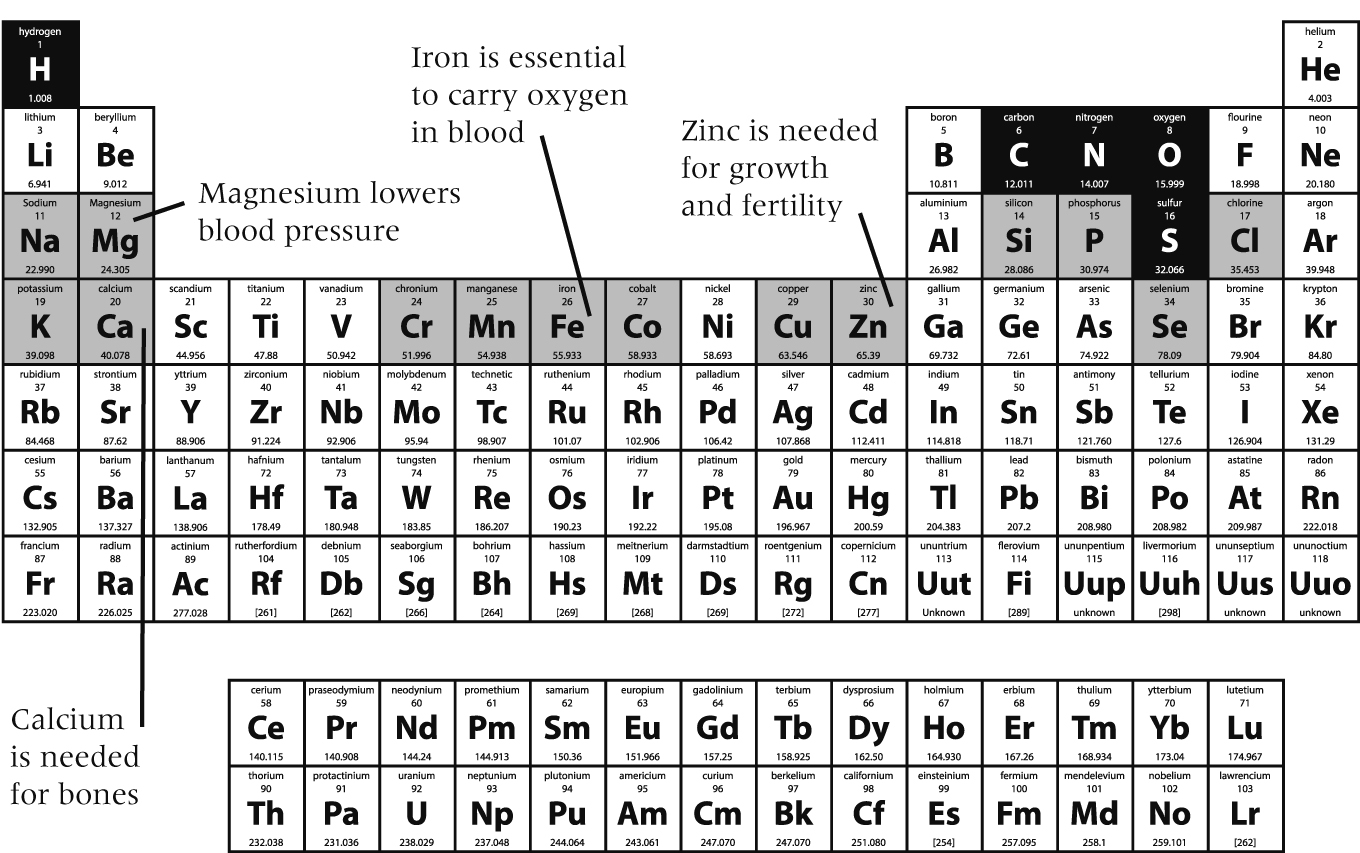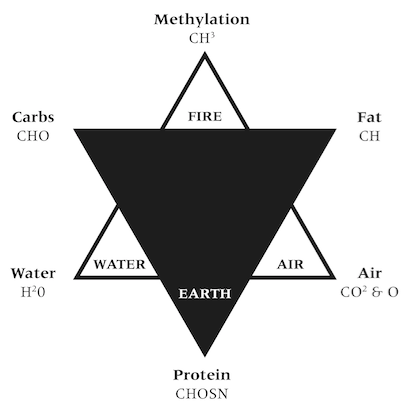Life, health and death are a flow, a transmutation of these elements from pure formless energy into the classical 118 elements of the periodic table. The visionary Russian chemist Dmitri Mendeleev saw how all the elements were related in a pattern according to their atomic weight. In 1869, when he had this realization, most of the elements had not been discovered, but now Mendeleev’s periodic table of the elements has been completed.

These elements combine in many ways to form our world. Air is mainly nitrogen and oxygen and converts to carbon dioxide. Water is made up of hydrogen and oxygen. Sugars and fats – our fuel – are carbon, hydrogen and oxygen. ProteinProteins are large molecules consisting of chains of amino acids. Proteins are essential nutrients for the human body – they are a building block of…, which gives us structure, includes nitrogen and sulphur.
MethylationMethylation is what occurs when the body takes one substance and turns it into another, so that it can be detoxified and excreted from the…, the process that keeps our body’s chemistry in balance, depends on methyl molecules made up of carbon and hydrogen. These five elements – carbon (C), hydrogen (H), oxygen (O), sulphur (S) and nitrogen (N) – make up 96.5 per cent of our body. We are CHOSN.
 How the macronutrients we depend on are made from the major elements
How the macronutrients we depend on are made from the major elements
Cycles of Life
Life sacrifices itself to life in a continuous cycle. Carbon, for example, is captured from the air (as carbon dioxide), stored in the soil and the sea, taken into plants and algae, consumed by people, animals and fish, then exhaled back into the air. Eventually our bodies decompose, or are burned, and nourish the soil. Dust to dust, ashes to ashes, as the saying goes. Joni Mitchell got it right when she said ‘We are stardust, billion year old carbon … And we’ve got to get ourselves back to the garden.’
As mentioned earlier, the oxygen in every other breath we take comes from algae. That is why the oceans are even more important than the Amazon jungle for life on Earth.
The world also has a cycle of fire, or light, ultimately from the Sun, which is trapped in plants in carbohydrateCarbohydrates are the primary source of energy for the body as they can be broken down into glucose (sugar) more readily than either protein or… and fatThere are many different types of fats; polyunsaturated, monounsaturated, hydrogenated, saturated and trans fat. The body requires good fats (polyunsaturated and monounsaturated) in order to…. It binds together the elements of carbon, hydrogen and oxygen like chords made of individual notes containing the vibrations that drive our biological processes.
Oxygen lights the fire in our cells’ power plants, the mitochrondria, releasing the Sun’s energy in food to energize and support life. These mitochondria are the great-grandchildren of bacteria. They have joined the fold, the unity we call our body. But that body also contains 10 times more bacteria than living cells. Where it starts and ends is a matter of debate. Are the bacteria in our gut and on our skin part of us?
There’s a nitrogen cycle too. Air is 78 per cent nitrogen and 21 per cent oxygen, yet oxygen gets all the credit. However, it turns out that we can’t use oxygen without nitrogen. Nitric oxide (one nitrogen and one oxygen atom) has to be attached to the haemoglobinHaemoglobin is the protein that is found in red blood cells. It contains iron and is responsible for carrying oxygen from the lungs to the… in red blood cells before oxygen can be delivered to the cells of our body. It also relaxes our arteries. (This is not the same as nitrous oxide – two nitrogens and one oxygen. That is laughing gas, which makes us laugh then pass out. It’s an anaesthetic, and bad news, because it stops us absorbing vitamin B12.)
We have a reserve of nitric oxide under the skin which is released when exposed to the Sun. That’s why sunbathing actually lowers blood pressure. Then, of course, there are the multitude of benefits from the Sun’s synthesis of vitamin DWhat it does: Helps maintain strong and healthy bones by retaining calcium. Deficiency Signs: Joint pain or stiffness, backache, tooth decay, muscle cramps, hair loss…. in the skin.
Wherever we look, there is a fundamental balance and connectedness between us and the world around us.
My Body is from the Earth
The Earth is from the Stars
The Stars are made of Light
My Body is made of Light
Extract from The Chemistry of Connection.

Comments
Join the Conversation on our Facebook Page